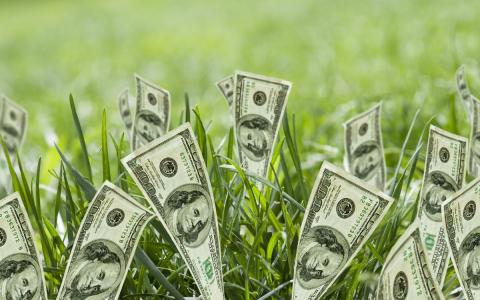
(Forbes) Imagine going to the bank loan officer and being told they’d pay you if you took out a loan with them.
That’s how “negative” interest rates work. It sounds silly. It’s counterintuitive. It’s going on in Europe right now.
But not in America.
Causing some confusion, the sudden talk of negative interest rates coincided with a rare event during our current inverted yield curve climate. It’s true an inverted yield curve often anticipates an economic downturn. There is, however, some debate whether today’s inverted yield curve is predicting a recession.
There’s one thing you can be sure of, though. An inverted yield curve is not the same as negative interest rates.
An inverted yield curve merely means shorter term maturity fixed income instruments are paying a higher interest rate than longer term maturity fixed income instruments. This usually, but not always, occurs because investors feel a slowing business cycle means their equities won’t experience the growth rates they’re targeting.
Negative interest rates represent a whole ‘nother kettle of fish. Comparing them to an inverted yield curve is like comparing apples and oranges. In fact, it’s possible to experience negative interest rates without having an inverted yield curve.
To describe the operational definition of negative interest rates, think of a typical fixed income transaction. “Ordinarily, when you buy a bond, the issuer pays you interest in exchange for the rights to use your money for a period of time,” says Ric Edelman, co-founder of Edelman Financial Engines. “But when rates fall below zero, you’re actually paying the issuer to hold your cash for you. Investors are willing to pay this fee only when they feel that any other choice is riskier.
Picture going to buy a car. The dealer gives you two options to pay for the new vehicle: cash or credit. When rates are above zero, buying a car on credit will cost you more because you’ll have to pay interest on the loan. When interest rates are negative, it’ll be cheaper to buy the car on credit than with cash!
That’s not the only way to make money with negative interest rates. Astute investors can find uncommon opportunities in such situations.
The most obvious case is the same advantage all bond holders experience during periods of falling interest rates. “People who already own bonds will benefit,” says Edelman, “because currently existing bonds rise in value when interest rates decline.”
Should a negative interest rate scenario arise, borrowers have the advantage over lenders. Negative interest rates will clearly hurt industries, companies and institutions that rely on loaning money.
But maybe not all of them.
The “negative” part of negative interest rates may not hold among all bond classifications. It may be that traditional high-yield bond markets, the riskier portion of the fixed income spectrum, will remain in positive territory. These might therefore represent the lending market lenders will pursue.
Other lenders might choose to avoid the risk and continue to offer loans with negative interest rates. This presents a tremendous opportunity for individuals and organizations seeking capital to expand revenue generating operations. It’s more than free money. You’re actually getting paid to borrow money.
If you’re saving for retirement, you’ll want to invest in stocks that can transform that no-cost capital into more profits.
On the personal side, you may find it more lucrative to restructure all your loans into negative interest rate loans, then defer any repayment until the due date. Can you say “goodbye student loan crisis”?
In the meantime, your cashflow balloons (since you no longer have loan payments to make). Who knows, maybe you can now buy those things you’ve been putting off purchasing.
And if you’re increasing your purchasing, everyone is increasing their purchasing.
And if everyone is buying, where do you think their money is going?
Into the companies making those goods. These companies will likely see appreciation in their stock price and, should they pay them, a rise in their dividends.
And dividends will be the key factor for retirees. Those who have already retired and who have relied on fixed income investing to provide a steady flow of cash will quickly learn the meaning of “interest rate risk” when their bonds mature during a time of negative interest rates.
Interest rate risk alludes to the inability to reinvest your principal in a way that yields the same fixed return. Dividend paying stocks will, as a result, represent a more attractive alternative. This demand can then further push up the price of dividend paying stocks.
Now, despite all this good news, don’t go cheering for negative interest rates. First, they can lead to unpleasant and unexpected side effects. Second, things have to get pretty bad from an economic perspective to justify negative interest rates. And nobody wants to go there.
So, if you’re retired or saving for retirement, what should you be more worried about: negative interest rates or a trade war with China? “Neither,” says Edelman. “Retirees should be worried about being able to generate the income they need for the rest of their lives. Negative interest rates and the trade war are both short-term issues that will be soon resolved and thus quickly forgotten.”



